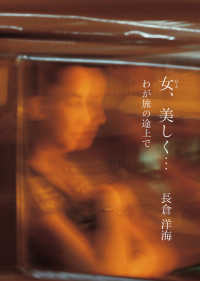- ホーム
- > 洋書
- > ドイツ書
- > Humanities, Arts & Music
- > Arts
- > architecture
Description
(Text)
In der DDR galt der Plattenbau als Herzstück der Sozialpolitik und Symbol für den realsozialistischen Fortschritt, als Ort der Vergesellschaftung und bekannt für modernes Wohnen in den lebhaften Siedlungen. Um den immensen Wohnungsmangel nach dem Krieg zu beheben, setzte das SED-Regime auf die industrielle Herstellung von Wohnungen, was in der WBS 70, der 1970 vorgestellten Wohnungsbauserie gipfelte. Nach der Wiedervereinigung gerieten die Plattensiedlungen zunehmend in Verruf. Sie wurden zum Schauplatz schmerzhafter Transformationen und zum Sinnbild für sozialen Niedergang und rassistische Gewalt. Als Ruinen warteten die Gebäude auf ihren Abriss, wurden saniert oder umgebaut. Im Osten Deutschlands ist diese Wohnform bis heute ein prägendes Element der Stadtlandschaften.
Wie die ostdeutschen Plattenbausiedlungen in der Kunst verhandelt werden, thematisiert der Katalog Wohnkomplex. Kunst und Leben im Plattenbau, der begleitend zur gleichnamigen Ausstellung im MINSK, kuratiert von Kito Nedo, erscheint. Präsentiert werden Installationen, Gemälde, Zeichnungen, Fotografien und Filme, die zwischen den 1970er-Jahren und heute entstanden. Mit Textbeiträgen von Grit Lemke, Bernd Lindner, Philipp Meuser, Kito Nedo und Kevin Hanschke sowie Juliane Richter.
History and Contemporary Life in the Prefab Block
In the GDR, prefabricated housing was considered a central pillar of social policy and symbol of the progress of real socialism, as a site of community life that beckoned with modern living in vibrant residential neighborhoods. To remedy the enormous housing shortage after the war, the socialist government relied on the industrial production of homes, a scheme that culminated in the Wohnungsbauserie 70, a type of dwelling first presented in 1970. After German reunification, the prefab housing estates soon fell into disrepute, becoming scenes of wrenching transformation and emblems of social decline and racist violence. Now modern ruins, the buildings awaited demolition, underwent redevelopment or alteration. In today's eastern Germany, this form of housing remains a defining element of the urban scenery.
Accompanying the exhibition at DAS MINSK curated by Kito Nedo, the catalogue Wohnkomplex. Art and Life in Plattenbau surveys the ways in which art has grappled with East Germany's prefabricated housing estates. It presents installations, paintings, drawings, photographs, and films created between the 1970s and today. With text contributions by Grit Lemke, Bernd Lindner, Philipp Meuser, Kito Nedo and Kevin Hanschke, and Juliane Richter






